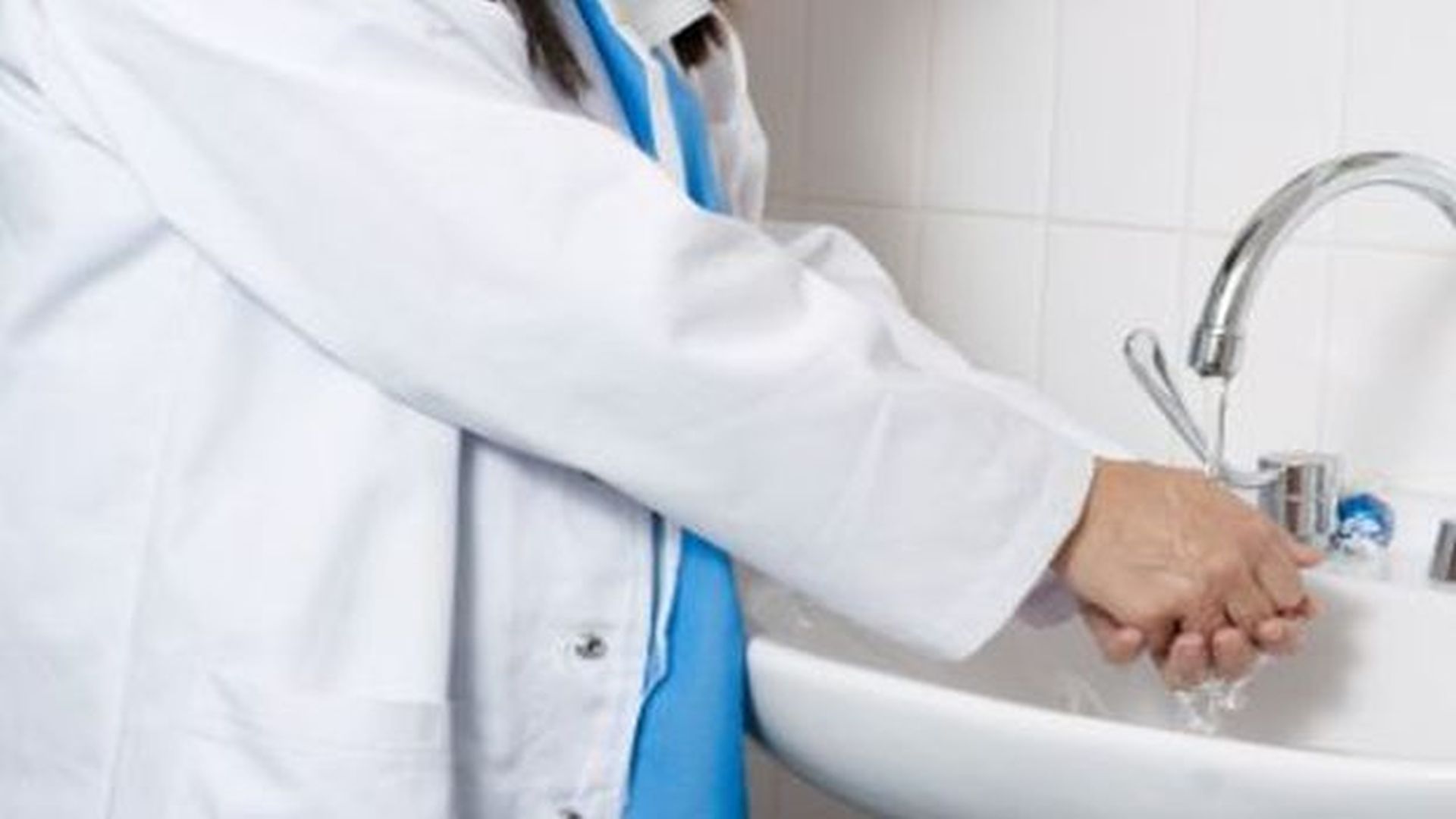Empowering Patients Effectively Improves Physician Hand Hygiene

Armed with new tools, patients and parents felt empowered to remind healthcare providers to perform hand hygiene, successfully improving compliance rates, but just over half of physicians felt that patients should be reminding providers, according to a new study published in the August issue of the American Journal of Infection Control.
Healthcare-associated infections (HAIs) contribute to significant rates of illness and mortality, with an estimated five to ten percent of patients admitted to acute care hospitals in the United States acquiring an HAI. Most HAIs are preventable, and the single most effective measure to reduce HAIs is hand hygiene.
Allison Lastinger, MD, of the West Virginia University (WVU) School of Medicine, led a multidisciplinary research team that performed a cross-sectional survey of parents of hospitalized children, adult patients and primary care physicians at the WVU Medicine J.W. Ruby Memorial Hospital, a 645-bed tertiary care teaching hospital in Morgantown, W.Va. Using an anonymous, self-administered questionnaire, the multidisciplinary research team-which included Kayeromi Gomez, PhD, of the WVU School of Public Health, Ellen Manegold, BA, of the WVU Department of Psychology, and Rashida Khakoo, MD, of the WVU School of Medicine-examined their attitudes toward a new patient empowerment tool (PET) at the hospital. The parent and patient surveys were distributed from December 2015 to June 2016; the physician survey was distributed in November 2015.
“Patient involvement is increasingly recognized as an important component of hand hygiene improvement strategies,” said Linda Greene, RN, MPS, CIC, FAPIC, 2017 APIC president. “Organizations must realize that patients and families are an important part of the healthcare team, and their involvement in hand hygiene campaigns should be encouraged.”
A total of 222 adult patients and parents completed the survey (108 adult patients and 114 parents). Most adult patients (64 percent) and parents (70 percent) said the PET made them feel more in control of their care. Most parents (77 percent for physicians and 81.4 percent for nurses) and adult patients (64.8 percent for physicians and 71.2 percent for nurses) felt comfortable using the PET to remind healthcare workers to perform hand hygiene. Researchers noted, however, that parents were nearly 20 percent more likely than adult patients to speak up if a physician did not perform hand hygiene. In Ruby Memorial Hospital, hand hygiene rates increased from 48 percent in 2015 to approximately 75 percent in 2016 as a result of the hospital’s multipronged initiative to increase handwashing rates among its healthcare providers. “Forty-eight percent is pretty standard,” said lead study author Lastinger, “so 75 percent is phenomenal.”
Among 89 healthcare provider responses (29 residents and 60 attending physicians), only 54.9 percent felt that patients should be involved in reminding providers to perform hand hygiene. Overall, physicians indicated that they would prefer a patient make the request verbally, rather than using the PET to remind them to perform hand hygiene.
Of the physicians who did not support patient involvement, 37 percent felt that it was not the patient’s responsibility to remind physicians to perform hand hygiene; 16 percent felt that it was embarrassing to the doctor; and 13 percent felt that it would have a negative impact on the patient-physician relationship.
While a number of studies have examined the role of patient involvement in healthcare worker hand hygiene, few have examined the role of family members in reminding healthcare providers to perform hand hygiene. However, the study notes that if patient involvement is to be successful, healthcare workers must accept it as helpful and not as a threat, which proved to be somewhat of an obstacle in this instance.
“Based on the results of this study, patient empowerment appears to be an effective strategy to facilitate healthcare workers’ adherence to hand hygiene, but acceptance of the PET by providers remains a challenge,” said Lastinger. “Barriers to hand hygiene adherence among healthcare providers should be identified and addressed.”
Reference: Lastinger A, et al. Use of patient empowerment tool for hand hygiene. American Journal of Infection Control, Volume 45, Issue 8 (August 2017).
Source: APIC
Glove Usage Guideline: From The Joint Commission, CDC, and World Health Organization
February 17th 2025Proper glove use is crucial in health care settings to prevent infections. Guidelines from TJC, CDC, and WHO stress correct selection, usage, and disposal to minimize health care–associated infections (HAIs) and cross-contamination risks. Infection preventionists (IPs) play a key role in educating staff, enforcing compliance, and improving patient safety through standardized glove practices.
Infection Intel: GermZapp Is the Innovative Hand Hygiene System IPC Needs
February 14th 2025GermZAPP is an affordable hand hygiene system designed to educate, monitor, and encourage adherence in schools, nursing homes, and health care settings, effectively addressing gaps in infection control.
Clean Hospitals With Alexandra Peters, PhD: The Double-Edged Sword of High-Tech
January 30th 2025Despite revolutionary advancements like alcohol-based hand rubs, infection prevention still faces major hurdles. Poor adherence to hygiene, overreliance on technology, and understaffed environmental services create perfect storm conditions for deadly outbreaks.
Infections Do Not Recognize International Borders: The Potential Impact of US Withdrawal From WHO
January 21st 2025The US withdrawal from WHO jeopardizes infection prevention, research funding, and global collaboration, disproportionately impacting low-income nations reliant on WHO support for equitable health care advancements.